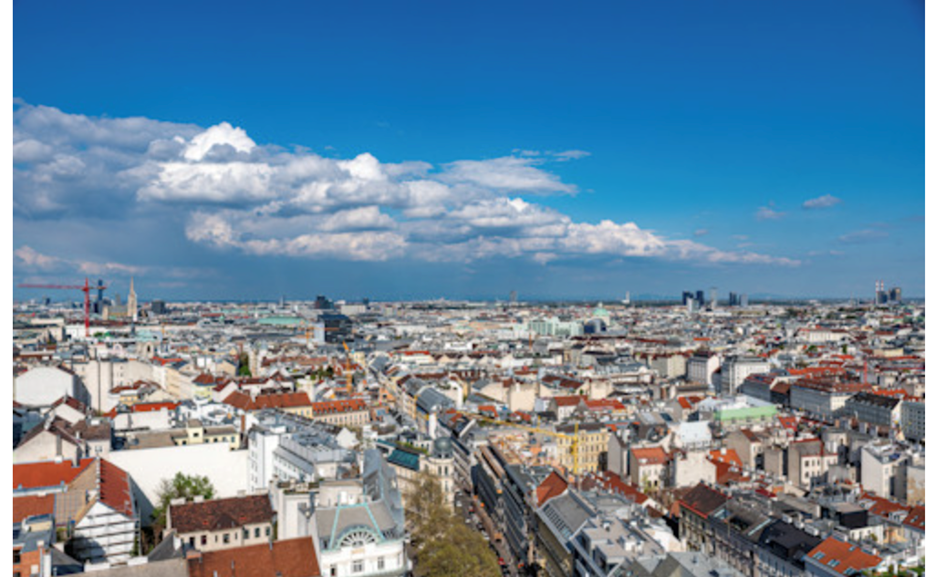
Introduction
In the face of escalating climate change concerns, the measurement and management of greenhouse gas (GHG) emissions have become pivotal for businesses and municipalities worldwide. Floodlight Invest, a leading player in environmental, social, and governance (ESG) metrics, has developed a sophisticated approach to GHG measurement that aligns seamlessly with the increasing regulatory demands. This blog explores how Floodlight’s methodologies not only meet but often exceed these demands. Additionally, we draw a parallel with the historical example of Vienna’s infrastructure investments over a century ago, demonstrating how strategic long-term planning can yield substantial benefits.
The Increasing Regulatory Landscape
The regulatory environment surrounding GHG emissions is becoming increasingly stringent. Governments and international bodies are implementing comprehensive frameworks to ensure transparency and accountability in carbon reporting. Notably, the European Union’s Corporate Sustainability Reporting Directive (CSRD) and the United States’ Securities and Exchange Commission (SEC) proposed rules on climate-related disclosures are pushing companies towards more rigorous and standardized GHG measurement practices.
Floodlight’s approach is particularly adept at navigating these regulatory waters. Their methodology emphasizes accuracy, transparency, and comprehensiveness, ensuring that companies are not only compliant but also well-prepared for future regulatory developments. By integrating real-time data analytics, blockchain technology for traceability, and advanced reporting tools, Floodlight Invest provides a robust platform for GHG measurement that aligns with both current and anticipated regulatory requirements.
Historical Perspective: Vienna’s Infrastructure Investments
To understand the importance of forward-thinking strategies in addressing today’s environmental challenges, we can look back at the city of Vienna. Over a hundred years ago, Vienna faced significant challenges in urban mobility. The city’s leaders recognized that without substantial investments in infrastructure, Vienna would struggle to support its growing population and economic activities.
In response, Vienna embarked on a series of highly ambitious infrastructure projects, including the development of an extensive tram network, modern sewage systems, and public buildings. These investments were not without controversy or cost, but they laid the foundation for Vienna’s current status as one of the most livable cities in the world. Today, Vienna enjoys efficient public transportation, clean urban spaces, and a high quality of life, all of which are direct results of the foresighted infrastructure investments made over a century ago. Many stakeholders today are faced with similar decisions: either pay and work for a system that works and can grow, or go very cheap, with coarsely estimated data and hope for the best (or early retirement). Just like in a great restaurant, the rewards of a tradition of not cutting corners are substantial, and the risks of the opposite can be fatal.
Strategic Long-Term Planning for Modern Challenges
Just as Vienna’s historical investments in infrastructure have paid off in the long term, companies and cities today must adopt strategic, long-term approaches to GHG measurement and reduction. Floodlight’s methodologies offer a blueprint for such strategies. By leveraging cutting-edge technology and adhering to stringent regulatory standards, businesses can ensure they are not only compliant but also leaders in sustainability.
Moreover, the benefits of such strategic planning extend beyond regulatory compliance. Companies that invest in accurate GHG measurement and reduction strategies are better positioned to mitigate risks, enhance their reputation, and capitalize on emerging opportunities in the green economy. Similarly, cities that prioritize sustainable infrastructure can improve the quality of life for their residents and attract investment and talent.
Conclusion
The journey towards sustainability is complex and requires a blend of immediate action and long-term planning. Floodlight’s approach to GHG measurement exemplifies how businesses can align with increasing regulatory demands while positioning themselves for future success. The historical example of Vienna serves as a powerful reminder that strategic investments made today can yield substantial benefits in the future. By adopting a proactive and comprehensive approach to GHG measurement, companies and cities alike can achieve lasting, important results.
AI was used to help write this article

